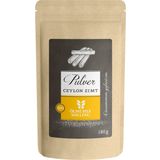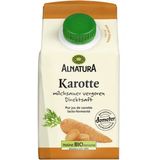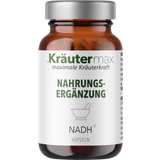Current Diet and Nutritional Trends
When occupying oneself with the topic of weight loss, one is able to distinguish between trends. It soon becomes clear that diet and nutrition go hand in hand. Here are the current developments and trends.
In the past, one miracle diet followed the next, each promising the best result in the shortest possible time and minimum effort. Sounds to good to be true? Yes, if these diets had held up their part of the bargain, they would still be valid today.
Nowadays, it is common knowledge that there is no such thing as a miracle diet. If it is weight loss you are after, it is a well-known fact that this is obtained by consuming less calories that what is being burned by the body. Simply put, if the equation of "less calories in, more calories out" does not sum up, weight loss will simply not happen. More and more diets today, are using this concept, highlighting easy and attainable ways to fulfill these goals.
New nutrition trends are also on the rise these days. Healthy nutrition is one everyone's lips, often in regards to classic diets. However, not all diets of yesteryear were healthy. Today, there are methods used to loose weight as well as eating healthy.
With so many different approaches, there is bound to be something for every individual taste, ranging from the meat lovers to those who like to follow strict rules and guidelines:
Vegan Nutrition
The term "vegan" does not only refer solely to the a vegan nutrition, but it is a way of life. Only pure vegetables are consumed, foregoing any forms of animal products. Fruits and vegetables are high on the list of foods. It is also important in veganism to prevent unnecessary animal suffering. When following a vegan diet and lifestyle, it is important to note taking care that no nutrient deficiency occurs.
Intermittent Fasting
You like numbers? Then this method of dieting is perfect for you. 55: 2 or 16: 8 or at least every third day? These numbers represent different forms of this particular diet. The idea behind this is as follows: Supply the body with healthy nutrition In a well-defined period, however the remaining time is spent fasting. For example, the ratio 5: 2 means eating normally for five days and fasting for the remaining two days. A 16: 8 ratio, refers to hours in a day, i.e. eating during 8 hours and fasting for 16 hours. If one is is disciplined and able to forego any form of food consumption for the defined period of time, this diet can be planned into the daily way of life without modifying the basic diet.
The Paleo Diet
The theory behind this diet is as follows: Even though the human body has not changed over the last few thousand years, the state of modern comforts have. Modern nutrition is not suitable for the "Stone Age" body.
This diet foregoes everything that did not exist during the Stone Age, e.g. no sugar, milk, grains or alcohol. Instead meat, nuts, fish, honey eggs, vegetables and fruit are included in the diet.
Energy Density
It does not matter how much you eat, to feel full. The term energy density represents the calorie content per gram. Basically, you can lose weight if you always eat food that are low in calories until you feel satisfied. The stomach is full and the calorie intake is low. Here, its all caters around arithmetic, however caloric tables can also be found on the internet, that are often illustrated using traffic light colours.
The Flexitarian Diet
Flexitarians are people who prefer vegetables, not adverse to the taste of a good piece of meat in moderation. These people eat mostly vegetables, fruits and other plant foods, but also occasionally eat meat and fish, in order to provide the body with proteins. Flexitarians rarely struggle with a lack of nutrients.
The TVL Diet
TVL stands for "therapeutic lifestyle changes". Foods that have a high proportion of saturated fatty acids are avoided. Instead, grain products, low fat dairy products, fish, lean meats, fruits and vegetables are mainly eaten. Snacks and ready-made products are completely eliminated, making this diet well balanced and healthy. The energy density of the food and its composition also play a role.
Latest reviews
-
 4.9 (8)
4.9 (8)BIO PRIMO Organic Almond Drink, Original, 1 l
- Strong almond aroma
- For mixing and cooking
- Organic almonds from Italy
€ 3,59 (€ 3,59 / l)Delivery by January 03
-
 5.0 (2)
5.0 (2)Ölmühle Solling Organic Celyon Cinnamon, 180 g
- Finely ground
- Made from whole cinnamon sticks
- Purely herbal product
€ 8,99 (€ 49,94 / kg)Delivery by January 03
-
 4.1 (7)
4.1 (7)Alnatura Organic Carrot - Lacto-Fermented Freshly Pressed Juice, 500 ml
- 100% freshly pressed juice
- Rich in provitamin A
- Suitable for drinking and cooking
€ 1,79 (€ 3,58 / l)Delivery by January 03
-
 5.0 (1)
5.0 (1)Kräuter Max NADH+, 60 capsules
- Nicotinamide adenine dinucleotide hydride
- Plant-derived BioVXR® capsule shell
- Just 1 capsule daily before a meal
€ 79,99 (€ 2.666,33 / kg)Delivery by January 03
